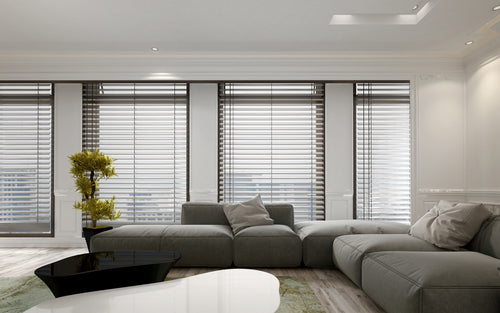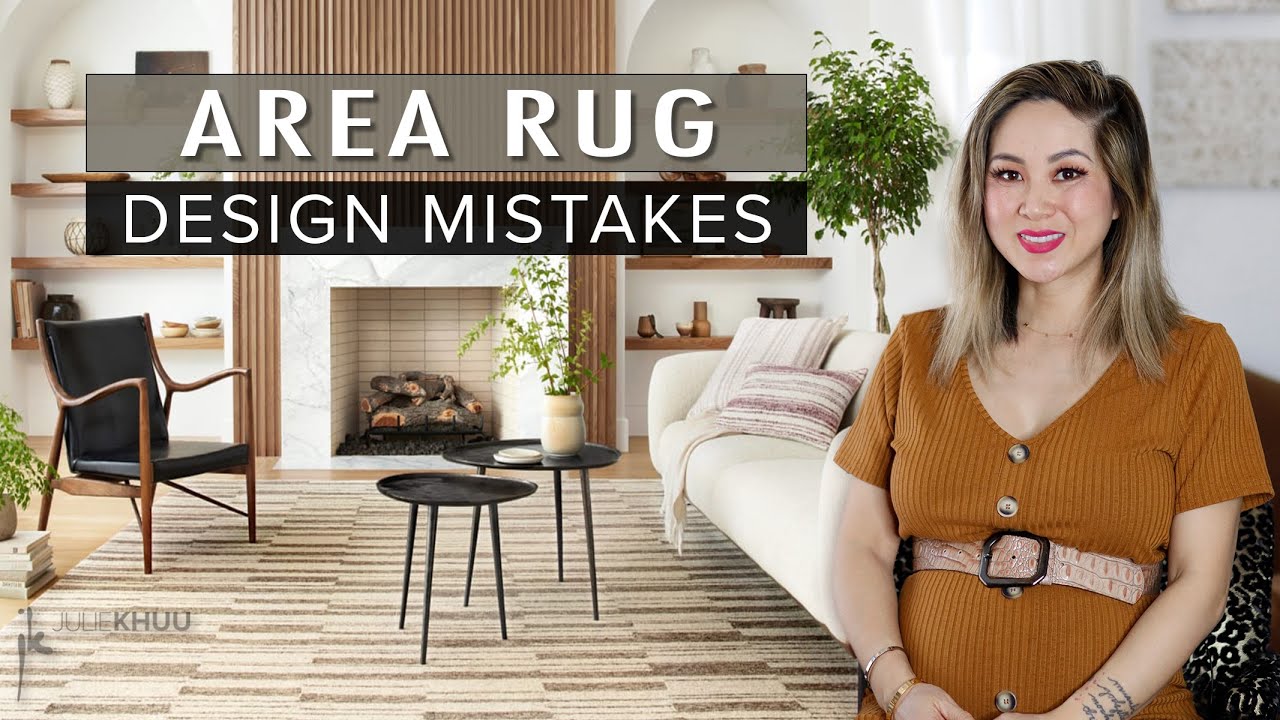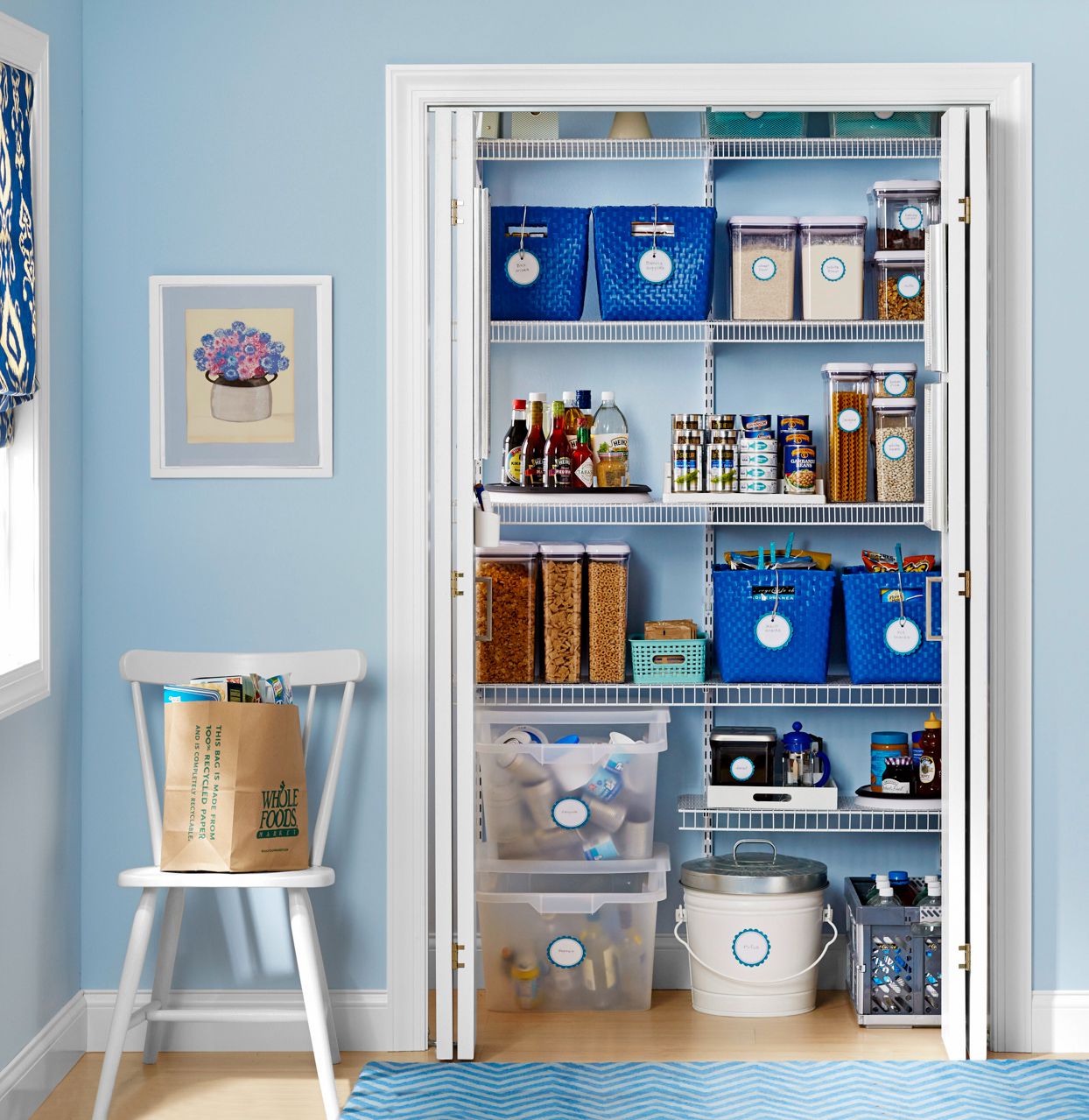Best shades for living room include neutral tones like beige, gray, and soft pastels. These colors create a calm and welcoming atmosphere.
Choosing the right shades for your living room can significantly impact the overall ambiance. Neutral tones such as beige, gray, and soft pastels are popular choices. They offer versatility and blend well with various decor styles. These colors create a serene and inviting environment, making your living room a perfect place to relax.
Soft pastels add a touch of warmth without overwhelming the space. Light colors also reflect natural light, making the room appear larger and brighter. Whether you prefer a modern or classic look, these shades provide a solid foundation for your living room’s design.

Credit: www.factorydirectblinds.com
#Tags : Best Shades for Living Room | blinds for.living room ideas | best type of blinds for living room | best blinds for living room | best window blinds for living room | best living room blinds | best window blinds for large windows | best blinds large windows | window treatments for family room | types of blinds for living room | best window treatment for living room | best blinds for big windows | best blinds for wide windows | what are the best blinds for wide windows | best blinds for living room windows
Color Psychology
Choosing the best shades for your living room can greatly affect the ambiance. Color psychology plays a crucial role in creating the perfect atmosphere. Different colors can influence our emotions and behaviors. Understanding the psychological impact of colors can help you make the best choice for your space.
Impact On Mood
Colors can directly impact your mood and well-being. For instance:
- Blue: Promotes calmness and relaxation. Ideal for a tranquil living room.
- Yellow: Brings energy and happiness. Perfect for a lively and cheerful space.
- Green: Evokes nature and balance. Good for a refreshing and peaceful atmosphere.
- Red: Stimulates excitement and passion. Suitable for a vibrant and dynamic room.
- Neutral Colors: Such as beige and gray, offer a sophisticated and versatile look.
Cultural Significance
Colors also have different meanings in various cultures:
| Color | Western Culture | Eastern Culture |
|---|---|---|
| White | Purity and peace | Mourning and death |
| Red | Love and passion | Luck and prosperity |
| Yellow | Happiness and energy | Royalty and honor |
| Blue | Calm and trust | Immortality and divinity |
Considering these cultural significances can add deeper meaning to your color choices. It can also make your living room a more inviting space for guests from different backgrounds.
Neutral Tones
Neutral tones are perfect for living rooms. They offer a calm and inviting space. These shades can make your room feel bigger and brighter. Let’s explore why neutral tones are great for living rooms.
Versatility
Neutral shades are highly versatile. They work with many styles. Whether your decor is modern or traditional, neutral tones fit in. They can adapt to any theme you choose.
Here’s why they are versatile:
- Blend with any color: Neutral tones go well with any color scheme.
- Timeless appeal: They never go out of style.
- Flexible: Easily update your decor without changing the wall color.
Pairing With Decor
Pairing neutral tones with decor is easy. They act as a blank canvas. This allows you to play with various colors and textures.
Here are some ideas:
| Decor Element | How to Pair |
|---|---|
| Furniture | Choose bold colors for a striking look. |
| Art | Add vibrant artwork to stand out. |
| Textiles | Use patterned rugs and cushions for texture. |
With neutral tones, your living room stays fresh and stylish. You can switch decor elements without much hassle.
Bold Colors
Bold colors can transform your living room into a vibrant, inviting space. They add personality and create a dynamic atmosphere. Using bold shades requires some planning. Here’s how you can effectively use bold colors in your living room.
Creating Focal Points
Bold colors can create striking focal points in your living room. A bright red sofa or a teal accent wall can draw attention and add energy to the space.
- Choose a bold color for one main item.
- Use artwork with vibrant hues.
- Add colorful throw pillows or rugs.
Balancing With Neutrals
Pairing bold colors with neutral tones balances the room. Neutrals like beige, white, and gray can calm the intensity of bold shades.
| Bold Color | Complementary Neutral |
|---|---|
| Bright Red | Soft Gray |
| Teal | Beige |
| Yellow | White |
Incorporate neutral furniture or decor items to avoid overwhelming the space. This keeps the bold colors from dominating the room.
Pastel Shades
Pastel shades create a calm and inviting living room atmosphere. These soft colors bring a sense of serenity and warmth. Pastels are versatile, complementing various decor styles.
Soft Ambiance
Pastel shades like mint green, baby blue, and lavender offer a soft ambiance. These colors make your living room feel cozy and welcoming. They are perfect for relaxation and social gatherings.
Consider a pale pink for a touch of elegance. Light yellow can brighten the space, making it cheerful. These colors reflect natural light, enhancing the room’s openness.
| Shade | Effect |
|---|---|
| Mint Green | Refreshing and calming |
| Baby Blue | Peaceful and serene |
| Lavender | Soothing and elegant |
Best Combinations
Combining pastels with neutral tones enhances their beauty. Try pairing mint green with beige or grey for a balanced look. Baby blue works well with white accents.
- Mint Green and Beige
- Baby Blue and White
- Lavender and Grey
For a more vibrant look, mix pastels with bolder shades. Pair lavender with a deeper purple. Combine pale pink with a rich navy blue. These combinations create a striking yet harmonious contrast.
- Lavender and Deep Purple
- Pale Pink and Navy Blue
Earthy Hues
Earthy hues create a warm and inviting living room. They bring nature indoors and provide a sense of calm and comfort. These shades connect us to the natural world and make spaces feel grounded and serene.
Natural Feel
Earthy hues give your living room a natural feel. Colors like brown, beige, and green mimic nature. These shades can make your space feel cozy and welcoming.
Use a soft brown for the walls. Add beige cushions on the sofa. Include a green plant for a touch of freshness.
Complementary Elements
Pair earthy hues with complementary elements for a balanced look. Wooden furniture works well with these shades. A jute rug can add texture to the space.
Check out the table below for some complementary elements:
| Earthy Hue | Complementary Element |
|---|---|
| Brown | Wooden Coffee Table |
| Beige | Jute Rug |
| Green | Indoor Plant |
Use these tips to style your living room. Create a space that feels both natural and elegant.
Monochromatic Schemes
Choosing the right shades for your living room can transform its look. One popular choice is the Monochromatic Scheme. This scheme uses one color in different shades, tints, and tones. It creates a cohesive and elegant look in any room.
Elegance
A monochromatic scheme brings an air of elegance to your living room. It creates a clean, sophisticated look. Think of a room with various shades of blue. You can use light blue walls, a navy sofa, and sky-blue cushions. This gives the room a harmonious feel.
| Shade | Usage |
|---|---|
| Light Blue | Walls |
| Navy Blue | Sofa |
| Sky Blue | Cushions |
Depth And Texture
Using a monochromatic scheme adds depth and texture to your living room. Varying shades of the same color create a layered effect. This makes the room feel more dynamic and interesting.
- Use darker shades for furniture.
- Choose lighter shades for walls.
- Add medium shades for accessories.
Textures also play a key role. Mix different fabrics and materials. A velvet navy sofa, a wool rug, and silk cushions add richness.
- Choose a base color.
- Select shades, tints, and tones.
- Mix textures and fabrics.
This approach ensures your living room feels cozy and inviting. It also maintains a unified and stylish look.
Accent Walls
Accent walls transform any living room into a stunning space. They offer a focal point that draws attention and enhances the room’s aesthetic. Choosing the perfect shade for your accent wall can elevate your living room’s style. Let’s dive into how to choose the right wall and explore popular colors.
Choosing The Right Wall
Selecting the right wall for your accent is crucial. Typically, the wall you first see when entering the room is ideal. This wall naturally grabs attention and sets the tone for the space. Consider walls with unique architectural features like fireplaces or large windows.
Another great option is the wall behind your sofa or main seating area. This choice creates a cozy backdrop for your living space. Ensure the wall you choose isn’t cluttered with too many decorations or furniture pieces.
Here’s a quick checklist to help you pick the best wall:
- Visible from the entryway
- Features like fireplaces or large windows
- Behind main seating areas
- Minimal clutter
Popular Colors
Choosing the right color sets the mood of your living room. Here are some popular color options:
| Color | Description |
|---|---|
| Deep Blue | Creates a calm and serene atmosphere. |
| Bold Red | Adds energy and warmth to the room. |
| Soft Gray | Offers a neutral and sophisticated look. |
| Rich Green | Brings a touch of nature indoors. |
Deep blue provides a sense of calmness and tranquility. It’s perfect for creating a serene environment. Bold red, on the other hand, energizes the space and adds warmth. If you prefer a neutral palette, soft gray is an excellent choice. It offers a sophisticated and modern feel.
Rich green brings the beauty of nature into your home. It refreshes and revitalizes the living room. Each of these colors can dramatically change the ambiance of your space.
Lighting Considerations
Choosing the best shades for your living room involves understanding lighting. The right shades can transform your space. They can enhance the natural and artificial light in your room.
Natural Light
Natural light can make your living room feel warm and inviting. Light-colored shades like white, cream, and beige can reflect sunlight. This makes the room appear brighter and more spacious.
Consider sheer curtains for a soft touch. They allow light to pass through while offering some privacy. If your room gets too much sun, opt for light-filtering shades. These reduce glare and protect your furniture from fading.
| Shade Type | Benefits |
|---|---|
| Light-colored Shades | Reflect sunlight, brighten space |
| Sheer Curtains | Allow light, provide privacy |
| Light-filtering Shades | Reduce glare, protect furniture |
Artificial Lighting
Artificial lighting is crucial during evenings and cloudy days. Dark-colored shades like navy, charcoal, and black create a cozy feel. They pair well with warm, yellow-toned lights.
Layered lighting adds depth to your living room. Use a combination of ceiling lights, floor lamps, and table lamps. This ensures even lighting throughout the space.
Consider dimmable lights for flexibility. These allow you to adjust the brightness based on your needs. This is especially useful for movie nights or reading time.
- Dark-colored Shades: Create a cozy feel
- Layered Lighting: Ensure even lighting
- Dimmable Lights: Adjust brightness
Seasonal Colors
Choosing the right colors for your living room can be fun. Each season brings its own charm. By changing colors with the seasons, you can keep your space fresh and lively. Let’s explore some stunning shades for summer and winter.
Summer Shades
Summer is all about brightness and cheerfulness. Use light and airy colors. These shades can make your living room feel fresh and vibrant.
- Sunny Yellow: Adds warmth and happiness.
- Sky Blue: Brings calm and tranquility.
- Mint Green: Feels refreshing and cool.
- Coral Pink: Adds a pop of color.
These colors reflect the joy and warmth of summer. They can make your living room a happy place.
Winter Hues
Winter colors are cozy and soothing. They create a warm and inviting atmosphere. Choose deeper and richer shades for the cold season.
- Deep Red: Adds warmth and depth.
- Dark Blue: Feels calm and serene.
- Forest Green: Connects with nature.
- Plum Purple: Adds luxury and richness.
These hues make your living room feel snug and comfortable. Perfect for chilly winter days.
Vintage Palettes
Choosing the right shades for your living room can be daunting. One timeless option is the vintage palette. Vintage shades bring a warm, nostalgic feel to any space. They blend old-world charm with contemporary aesthetics.
Retro Inspiration
Retro-inspired shades are making a strong comeback. These colors evoke the charm of the 1950s and 1960s. Think mustard yellows, teal blues, and avocado greens. These colors create a playful yet sophisticated look.
Below is a table showcasing popular retro shades:
| Color | Description |
|---|---|
| Mustard Yellow | Warm, earthy, and inviting |
| Teal Blue | Bold, calming, and vibrant |
| Avocado Green | Rich, earthy, and lively |
Modern Twist
Incorporate vintage colors with a modern twist for a unique look. Pair retro shades with sleek furniture and minimalist decor. This contrast creates a dynamic and eye-catching space.
Here are some ideas for blending vintage and modern styles:
- Use mustard yellow cushions on a grey sofa.
- Add teal blue curtains to a white-walled room.
- Combine avocado green rugs with wooden furniture.
By balancing these elements, you achieve a harmonious blend of old and new. This approach ensures your living room feels both nostalgic and contemporary.
Minimalist Approach
The minimalist approach creates a serene and organized living room. It emphasizes simplicity, focusing on the essentials. This approach uses neutral colors and clean lines, creating a calm and inviting space.
Subtle Shades
Subtle shades are key in minimalist design. They offer a soothing background. Here are some popular options:
- White: Offers a clean and spacious feel.
- Beige: Adds warmth without overwhelming.
- Gray: Provides a modern and sophisticated touch.
These colors create a peaceful atmosphere. They also make the room appear larger.
Clean Lines
Clean lines are another cornerstone of minimalist design. They maintain the room’s simplicity. Here are ways to incorporate clean lines:
- Furniture: Choose pieces with straight edges and no extra details.
- Decor: Opt for simple and functional items.
- Lighting: Use fixtures with sleek designs.
Clean lines keep the room uncluttered and organized. They also highlight the beauty of each piece.
Warm Vs Cool Tones
The choice between warm and cool tones can greatly influence your living room’s ambiance. Warm tones create a cozy, inviting atmosphere, while cool tones offer a modern, calming effect. Let’s explore how these tones affect your space.
Room Temperature
The color tone you choose can impact the perceived temperature of your room. Warm tones, like reds, oranges, and yellows, make a room feel warmer. They are great for colder climates or rooms that lack natural light.
Cool tones, such as blues, greens, and purples, make a room feel cooler. These shades are perfect for rooms with plenty of sunlight or in warmer climates.
| Color Tone | Effect on Room Temperature |
|---|---|
| Warm Tones | Make the room feel warmer |
| Cool Tones | Make the room feel cooler |
Personal Preferences
Your personal taste plays a big role in choosing warm or cool tones. Some people prefer the coziness of warm shades. Others enjoy the tranquility of cool colors.
Think about the mood you want to create. Warm tones can make a space feel lively and intimate. Cool tones can make it feel serene and spacious.
- Warm Tones: Ideal for social gatherings and lively spaces.
- Cool Tones: Perfect for relaxation and quiet moments.
Consider blending both to achieve a balanced look. For example, use warm accents in a cool-toned room. Or, add cool elements in a warm-toned space.
Textured Paints
Textured paints can transform your living room. These paints add depth and style. They create a unique and engaging atmosphere. This makes your space more inviting.
Adding Dimension
Using textured paints, you add dimension to your walls. This technique brings surfaces to life. It creates visual interest and makes your room stand out.
Textured paints can also hide flaws. They mask imperfections on your walls. This gives your space a polished look.
Popular Textures
There are various popular textures for living room walls. Here are some common choices:
- Sand Texture: Adds a gritty, rough look.
- Knockdown Texture: Smooths out a rough surface.
- Orange Peel Texture: Mimics the look of an orange peel.
- Venetian Plaster: Creates a marble-like appearance.
- Popcorn Texture: Adds a bumpy, popcorn-like finish.
Each texture has its unique charm. Choose one that matches your style. The right texture can make your living room cozy and stylish.
Complementary Colors
Choosing the best shades for your living room can be a fun experience. Complementary colors are a great way to add vibrancy and balance to your space. These colors are opposite each other on the color wheel and create a striking contrast when paired together. Understanding how to use them can transform your living room into a stylish and harmonious environment.
Color Wheel Basics
The color wheel is a simple tool that shows the relationships between colors. It helps you see which colors complement each other. There are 12 main colors on the wheel, split into primary, secondary, and tertiary colors.
| Primary Colors | Secondary Colors | Tertiary Colors |
|---|---|---|
| Red | Orange | Red-Orange |
| Blue | Green | Blue-Green |
| Yellow | Purple | Yellow-Green |
Understanding these basics helps you choose complementary colors. For example, red and green are opposite each other and work well together.
Perfect Pairings
Using complementary colors can make your living room pop. Here are some perfect pairings:
- Blue and Orange: This combination offers a calming yet energetic feel.
- Yellow and Purple: These colors create a luxurious and vibrant space.
- Red and Green: This pairing is festive and lively, ideal for social spaces.
You can use these pairings in various ways, such as:
- Painting one wall with one color and adding accents of the complementary color.
- Using furniture and decor items in complementary colors.
- Mixing textiles, like cushions and curtains, in these colors.
Perfect pairings add depth and interest to your living room. They create a balanced and visually appealing atmosphere. Using these tips helps you achieve a stylish and harmonious living room.
Furniture Coordination
Choosing the best shades for your living room involves more than just wall colors. Furniture coordination plays a pivotal role in achieving a harmonious look. This section will guide you on how to match and contrast your furniture with the right shades.
Matching Colors
Matching colors can create a unified and calming atmosphere. Consider these tips:
- Use a color palette that complements your furniture.
- If your sofa is beige, opt for neutral shades like white or cream.
- For a blue couch, shades of grey or soft blue work well.
Here’s a table for quick reference:
| Furniture Color | Complementary Wall Shades |
|---|---|
| Beige | White, Cream, Soft Brown |
| Blue | Grey, Soft Blue, White |
| Grey | White, Light Grey, Soft Pink |
Contrasting Styles
Contrasting styles can add drama and interest to your space. Follow these suggestions:
- Pair a bold-colored sofa with neutral wall shades.
- If your furniture is modern, use vintage-inspired wall colors.
- For rustic furniture, try industrial shades like grey or black.
Here are some combinations to consider:
- A red couch with soft white walls.
- Modern white furniture with a dark blue accent wall.
- Rustic wooden tables with grey or black walls.
Experiment with these ideas to find the perfect balance for your living room.

Credit: www.blindstogo.com
Diy Painting Tips
Adding a fresh coat of paint to your living room can transform the space. With these DIY Painting Tips, you can achieve a professional look without hiring a pro. Follow these steps and bring your living room to life.
Preparation
Proper preparation is key to a successful paint job. Here are the steps to prepare your living room:
- Clear the room: Remove all furniture and cover the floors with drop cloths.
- Clean the walls: Use a damp cloth to wipe off dust and grime.
- Repair any damage: Fill holes and cracks with spackle, then sand smooth.
- Tape off areas: Use painter’s tape to protect trim, windows, and doors.
Techniques
Using the right techniques can make a big difference. Follow these tips for the best results:
- Prime the walls: Apply a primer to ensure even paint coverage.
- Cut in: Use a brush to paint edges and corners before rolling.
- Roll paint: Use a roller for large areas, applying in a “W” pattern.
- Apply multiple coats: Two coats of paint usually provide the best coverage.
- Remove tape: Pull off painter’s tape while the paint is still wet.
Here’s a quick reference table for the best shades for your living room:
| Shade | Vibe |
|---|---|
| Soft Gray | Calm and Elegant |
| Warm Beige | Cozy and Inviting |
| Pale Blue | Fresh and Relaxing |
| Light Green | Natural and Serene |
With these DIY Painting Tips, you can achieve a stunning living room makeover. Enjoy your beautifully transformed space!
Eco-friendly Paints
Choosing eco-friendly paints for your living room is smart. These paints are good for the environment and your health. They have low or no VOCs (volatile organic compounds), which means fewer toxins in the air. This creates a safer space for your family.
Benefits
- Healthier Indoor Air Quality: Eco-friendly paints release fewer toxins.
- Reduced Environmental Impact: Made from natural, renewable resources.
- Better Performance: Long-lasting and durable finishes.
- Easy Clean-Up: Water-based, making clean-up simple.
- Less Waste: Often come in recyclable containers.
Top Brands
| Brand | Features |
|---|---|
| Benjamin Moore Natura | Zero VOCs, low odor, premium finish |
| ECOS Paints | Non-toxic, zero VOCs, wide color range |
| Behr Premium Plus | Low VOCs, mildew-resistant, great coverage |
| Farrow & Ball | Low VOCs, rich colors, eco-friendly |
| Clare Paint | Zero VOCs, designer-curated colors, easy to apply |
Children’s Spaces
Designing a living room that caters to children can be fun. Choosing the right shades makes the space inviting and safe. Let’s explore some ideal shades for creating playful and secure children’s spaces.
Playful Shades
Children love colors that are bright and cheerful. Consider shades like sunny yellow, sky blue, and apple green.
- Sunny Yellow: This color brings warmth and joy.
- Sky Blue: Calming and perfect for a serene feel.
- Apple Green: Fresh and energizing for active play.
Using these shades can create a happy and stimulating environment. Mix and match for a fun, eclectic look.
Safety Considerations
Safety is a top priority in children’s spaces. Choose shades that are non-toxic and easy to clean.
| Consideration | Details |
|---|---|
| Non-toxic Paints | Ensure the shades are free from harmful chemicals. |
| Washable Shades | Opt for shades that can be easily wiped clean. |
Avoid shades that peel or chip easily. This reduces the risk of children ingesting paint. Also, choose low-VOC paints for better air quality.
Creating a space that is both fun and safe can enhance children’s development. The right shades can make all the difference.
Professional Advice
Choosing the best shades for your living room can be challenging. Expert opinions can make this easier. Let’s explore insights from interior designers and color consultants.
Interior Designers
Interior designers are experts in creating beautiful spaces. They suggest shades that match your furniture and decor. Common advice from interior designers includes:
- Neutral colors like beige, gray, and white. These colors make the room feel bigger.
- Bold colors for accent walls. These add a pop of personality.
- Soft pastels for a calming effect. Light blue and mint green work well.
Designers also recommend considering the room’s lighting. Natural light can affect how colors look. They might suggest testing paint samples before making a final decision.
Color Consultants
Color consultants specialize in finding the perfect color combinations. They use color theory to ensure harmony. Their recommendations often include:
- Warm tones like yellow and orange. These colors create a cozy feeling.
- Cool tones like blue and green. These colors bring a sense of calm.
- Contrasting colors to highlight features. A dark shade can make a fireplace stand out.
Color consultants also consider the psychological impact of colors. They know which shades can boost mood or promote relaxation. Their advice often leads to a more comfortable living space.
| Expert | Recommended Shades |
|---|---|
| Interior Designers | Neutral, Bold, Soft Pastels |
| Color Consultants | Warm Tones, Cool Tones, Contrasting Colors |
:strip_icc()/NewportHome-034-93685cb6c6a64076880091a4800c8111.jpg)
Credit: www.mydomaine.com
Trendy Colors
Choosing the right shade for your living room can transform the space. Let’s dive into some trendy colors that can give your living room a fresh, modern look.
Current Trends
Modern living rooms are seeing a surge in bold and vibrant colors. These colors bring energy and life to your space. Some popular choices include:
- Deep Blue: Adds a touch of sophistication and calm.
- Emerald Green: Creates a lush and inviting atmosphere.
- Mustard Yellow: Brightens up the room with warmth.
- Soft Pink: Offers a gentle, cozy feel.
These trendy shades are perfect for creating a lively and welcoming environment.
Timeless Choices
Some colors never go out of style. These timeless choices ensure your living room always looks elegant:
- Neutral Whites: Perfect for a clean, open look.
- Classic Grays: Versatile and sophisticated.
- Beiges: Warm and inviting, yet understated.
- Soft Blues: Calming and serene, ideal for relaxation.
These colors are perfect for creating a classic and elegant living room.
| Trend | Color | Effect |
|---|---|---|
| Current | Deep Blue | Sophistication and calm |
| Current | Emerald Green | Lush and inviting |
| Current | Mustard Yellow | Warmth and brightness |
| Current | Soft Pink | Gentle and cozy |
| Timeless | Neutral Whites | Clean and open |
| Timeless | Classic Grays | Versatile and sophisticated |
| Timeless | Beiges | Warm and understated |
| Timeless | Soft Blues | Calming and serene |
Frequently Asked Questions
What Type Of Blinds Look Best In Living Room?
Wooden or faux wood blinds, Roman shades, and roller blinds look best in living rooms. They offer style and functionality.
Which Color Shade Is Best For A Living Room?
Neutral colors like beige, gray, and soft white are best for a living room. They create a calm, versatile space.
What Type Of Shades Are In A Living Room?
Living room shades include roller shades, Roman shades, cellular shades, and sheer shades. They offer style, privacy, and light control.
Should Shades Be Lighter Or Darker Than Walls?
Shades can be either lighter or darker than walls, depending on the desired contrast and room ambiance. Lighter shades create a spacious feel, while darker shades add depth and coziness. Choose based on your style preference and room lighting.
What Are The Best Shades For Living Rooms?
Roman shades, roller shades, and cellular shades are popular choices for living rooms.
Are Blackout Shades Suitable For Living Rooms?
Yes, blackout shades are great for privacy and light control in living rooms.
How To Choose Shade Color For Living Rooms?
Match the shade color with your existing decor for a cohesive look.
What Are The Benefits Of Cellular Shades?
Cellular shades provide excellent insulation and energy efficiency.
Are Motorized Shades Worth It For Living Rooms?
Motorized shades offer convenience and are great for hard-to-reach windows.
Do Roman Shades Suit Modern Living Rooms?
Yes, Roman shades can complement modern, traditional, and transitional living room styles.
Conclusion
Selecting the best shades for your living room transforms the space into a cozy and stylish haven. Consider natural light, room size, and personal taste when choosing colors. The right shades can enhance your living room’s ambiance, making it more inviting and comfortable for family and guests.
Happy decorating!








